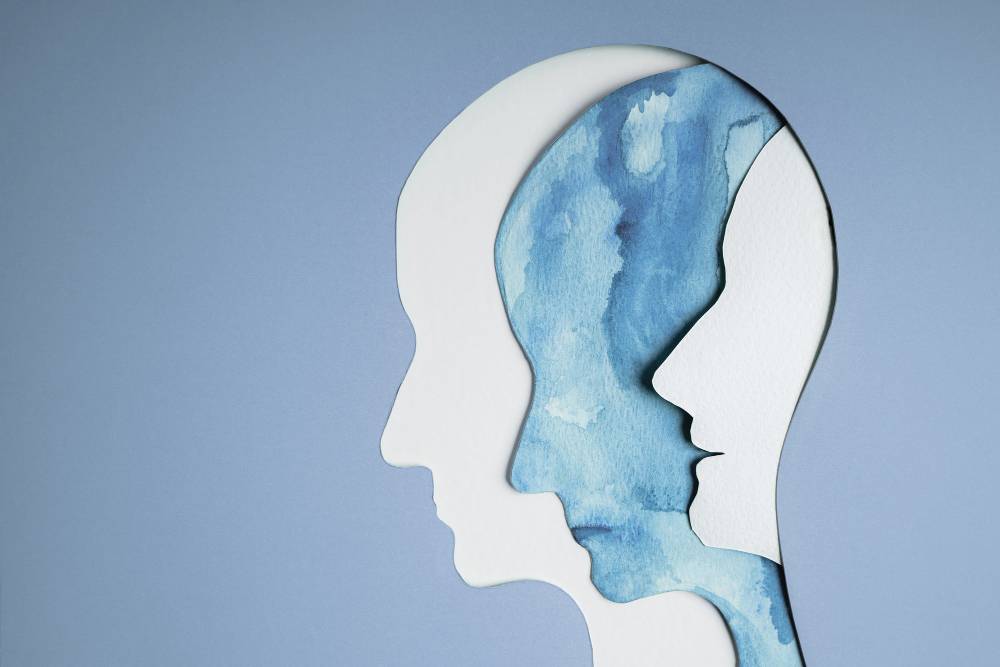By Pamela Assid, DNP, RN
Medically reviewed by Kimberly Brown, MD
Blood clots in stool can have a number of possible causes, some of which are more serious than others. Though blood clots in stool are invariably the result of gastrointestinal (GI) bleeding, the bleeding might be from the upper GI tract (including the esophagus and stomach) or the lower GI tract (including the colon and rectum).
The possible causes can range from readily treated conditions like hemorrhoids and anal fissures to much more serious ones like ulcerative colitis and colon cancer, so it's important to see a healthcare provider immediately.
This article explores the possible causes of blood clots in stool, including how different conditions cause different types of blood clots. It also explains how the conditions are treated and when it is time to see a healthcare provider.
Jeniffer Fontan / Getty Images
Types of Blood Clots in Stool
A blood clot is a gel-like clump of blood, also known as a thrombus. Blood clots can be beneficial as they stop bleeding from a cut or injury. But when clots are found in your stool, it is an indication of internal bleeding that may be mild or severe.
Blood clots from GI bleeding can vary in appearance, providing clues as to the underlying cause. Among the key differences:1
Dark or tarry clots indicate bleeding in the upper GI tract. This is because the iron content in the blood reacts to oxygen and gets continuously darker as it moves through the intestines.
Bright red or maroon clots Indicate bleeding in the lower GI tract. This is because blood from the lower portion of the intestine has less time to oxidize and, as a result, will appear redder.
Larger blood clots are worrisome simply because they suggest there is more bleeding. (This doesn't suggest that small clots are of no concern, particularly if there are many.)
Blood clots with mucus are suggestive of a more serious medical condition such as an infection, an inflammatory disease, or cancer.
What Causes Blood Clots in Stool?
There are several medical conditions that can cause blood clots in your stool. Although some of these conditions will resolve on their own without treatment, it is important to see a specialist known as a gastroenterologist if the bleeding is severe or persistent.
Hemorrhoids
Hemorrhoids are swollen and inflamed veins in the anus and lower rectum.2 Hemorrhoids can result from straining during bowel movements or lifting heavy objects.
Hemorrhoids can develop internally (in the rectum) or externally (around the anus), causing pain and rectal bleeding. When wiping, spots or streaks of bright red blood may be seen on toilet paper or passing stools.
However, blood clots can develop if a hemorrhoid is thrombosed. Thrombosed hemorrhoids happen when hemorrhoidal tissues get pushed outside of the anus and fill with blood clots. In severe cases, necrosis (tissue death) can occur, causing an open, oozing sore with darkened clots.3
Anal Fissures
Anal fissures are small tears inside the anus. They are often caused by straining during bowel movements with constipation. Persistent diarrhea can also cause fissures The blood from anal fissures is typically bright red and may be accompanied by bright red clots.
Upper GI Bleed
An upper gastrointestinal (GI) bleed is any internal bleeding from the esophagus, stomach, or first part of the small intestine (duodenum). There are many possible causes of an upper GI bleed, some of the most common of which include:4
Gastric and duodenal ulcers (ulcers in the stomach or duodenum)
Erosive esophagitis (bleeding from the esophagus due to acid reflux)
Duodenitis (inflammation of the duodenum by infection and other causes)
Varices (a.k.a. varicose veins)
Gastroenteritis
Gastroenteritis is an infection in the stomach or intestines caused by a virus or bacteria, such as norovirus or Salmonella. When severe, it can lead to bloody vomit and bloody diarrhea as well as multiple dark red or tarry blood clots (depending on where the infection is located).
With certain infectious causes of gastroenteritis, such as Campylobacter and Shigella, severe lower GI bleeding may occur and require medical intervention to stem the bleeding.56
Diverticular Disease
Diverticular disease is a medical condition that occurs when small pouches form in the colon and push outward through weak spots. Diverticulosis can sometimes cause significant bleeding, producing blood clots that range from bright red to maroon in color.
Inflammatory Bowel Disease (IBD)
Inflammatory bowel disease (IBD) refers to two related but distinct inflammatory diseases of the colon:
Crohn's disease: A milder form in which there are localized areas of inflammation
Ulcerative colitis: A severe form in which there is continuous inflammation
Symptoms include abdominal pain, bloody diarrhea, rectal bleeding, and a constant urge to have a bowel movement. IBD can also cause mucusy stools with small red to maroon clots.
Peptic Ulcer Disease
Peptic ulcers are open sores in the lining of the stomach. They are commonly the result of an H. pylori infection or the overuse of nonsteroidal anti-inflammatory medicines (NSAIDs). Symptoms include nausea, cramping, indigestion, and gnawing stomach pain. Bleeding can be profuse and cause dark or tarry stools and blood clots.
Ischemic Colitis
Ischemic colitis is an injury of the colon caused by impaired or obstructed blood flow. The condition is most commonly seen in older adults with a history of atherosclerosis (hardening of the arteries). Symptoms include abdominal pain and bloody diarrhea, which may be accompanied by bright red or maroon clots.
Colon Cancer
Colon cancer can cause dark or tarry stools when the disease is advanced. Most start as noncancerous polyps that can also bleed as they get larger.
The bleeding occurs when blood vessels quickly form to "feed" the growing tumor. As the tumor increases in size, the fragile vessels can burst, causing bloody stools, often with mucus and/or bright or dark red clots (depending on the location of the tumor).
When to See a Healthcare Provider
Symptoms of blood clots in the stool should be evaluated by a healthcare provider, particularly when sudden or severe.
Although many causes of GI bleeding do not cause significant loss of blood, it is possible to lose blood quickly if there is a large rupture (such as might occur with a severe peptic ulcer or bowel perforation due to diverticulosis).
When Blood Clots in Stool Is an Emergency
Call 911 or seek emergency care if blood clots in stool are accompanied by:1
Sudden severe dizziness or fainting
Rapid or irregular heartbeats
Nausea and vomiting
Sudden severe diarrhea
Chest pain
Pale and clammy skin
Shortness of breath
Extreme thirst
Diagnosis
The diagnosis of blood clots in stools typically involves a review of your medical history and a physical exam. Based on the findings, other tests may be ordered, including:1
Stool culture: A lab test that checks for bacteria, viruses, and other germs in a sample of stool
Blood testing: Includes tests that can detect signs of infection, inflammation, or anemia
Colonoscopy: A minimally invasive test in which a narrow fiber-optic scope is inserted into the anus to examine the colon
Abdominal computed tomography (CT): An imaging test that composites multiple X-rays to create three-dimensional images of the digestive organs
Related Symptoms
Depending on the location of the GI bleeding, related symptoms might include:7
Hematemesis: Bloody vomit
Hematochezia: Bright red blood in stools from lower GI bleeding
Melena: Dark, tarry stools caused by bleeding in the upper GI tract
Fecal urgency: A sensation that you need to defecate even when the bowels are empty
What Can Be Mistaken for Blood Clots in Stool?
Certain foods and medications can make it look like you have blood or blood clots in your stool, causing stool colors ranging from bright red to pitch black.
Examples include:8
Activated charcoal
Beets
Bismuth (found in Pepto-Bismol and Kaopectate)
Black licorice
Blood sausage
Cranberries
Iron supplement
Red food coloring (such as in strawberry gelatin)
Tomatoes
Blood Clots in Stool Treatment
The treatment of blood clots in stools varies based on the cause. The primary aim is to treat the underlying condition, although some conditions may require specialist intervention to directly stop or treat the source of the bleeding.
Examples include:
Condition | Treatment | Specialist Interventions |
|---|---|---|
Hemorrhoids | A high-fiber diet, stool softeners. sitz bath | Rubber band ligation, sclerotherapy, electrocautery |
Anal fissure | A high-fiber diet, stool softeners. topical anesthetics, high blood pressure medications | Botox injection, sphincterotomy surgery |
Gastroenteritis | Antibiotics, oral or intravenous (IV) rehydration | Sclerotherapy, electrocautery for GI bleeding |
Diverticular disease | A high-fiber diet, probiotics, antibiotics | Sclerotherapy, electrocautery, abscess drainage |
IBS | Avoidance of IBS triggers, antidepressants, prescription IBS drugs like Linzess (linaclotide) | Generally not needed |
Peptic ulcer | Antibiotics, proton pump inhibitors, bismuth | Sclerotherapy, electrocautery |
Ischemic colitis | Antibiotics, IV fluids, avoidance of vasoconstrictor drugs | Colectomy surgery |
Colon cancer | Chemotherapy, radiation therapy, immunotherapy, targeted therapy | Colectomy surgery |
Summary
GI bleeding is a common symptom of many different medical conditions, including hemorrhoids, anal fissures, diverticular disease, Crohn's disease, ulcerative colitis, and more.
Always tell your healthcare provider if you are experiencing new or unexplained blood in your stool. They can do blood tests, stool tests, a colonoscopy, or a CT scan to determine the cause. Treatments vary depending on the underlying issue.
Sources
National Institute of Diabetes and Digestive and Kidney Diseases. Symptoms & causes of GI bleeding.
National Institute of Diabetes and Digestive and Kidney Disease. Definition & facts of hemorrhoids.
Sun Z, Migaly J. Review of hemorrhoid disease: presentation and management. Clin Colon Rectal Surg. 2016 Mar;29(1):22–29. doi:10.1055/s-0035-1568144
World J Gastrointest Pathophysiol. 2014 Nov 15 5(4):467–478. doi:10.4291/wjgp.v5.i4.467
PMCID: PMC4231512
PMID: 25400991
Diagnosis of gastrointestinal bleeding: A practical guide for clinicians
Bong Sik Matthew Kim, Bob T Li, Alexander Engel,
Da Cruz Gouvela MA, Lins MTC, da Silva GAP. Acute diarrhea with blood: diagnosis and drug treatment. J Pediatr (Rio J). 2020 Mar-Apr;96(Suppl 1):20–28. doi:10.1016/j.jped.2019.08.006
Sharma R, Attarha BO, Abadeer K, Ribeiro B. Massive lower gastrointestinal hemorrhage as a complication of severe Campylobacter enteritis. Cureus. 2022 Apr;14(4):e24239. doi:10.7759/cureus.24239
National Institute of Diabetes and Digestive and Kidney Diseases. Diverticular disease.
John Hopkins Medicine. Stool color guide.
By Pamela Assid, DNP, RN
Pamela Assid, DNP, RN, is a board-certified nursing specialist with over 25 years of expertise in emergency, pediatric, and leadership roles.







Post comments